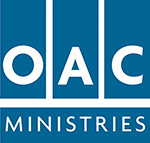
Top Tips for Videoing
At this time when we’re all learning to use new technology I thought I’d give some top tips for videoing. It goes without saying that you need to be seen and be heard and yet it is easy to get even these basics wrong.
Be Seen
Have you got enough light? The best light is natural light so if you can video near a window during daylight that is usually your best option. If it creates too much shadow then put a white card or sheet on the opposite side to bounce light back.
Colour Cast
If you are using lights you need to be aware that different types of lights give different colour casts. If your video has a strange hue to it you either need to change the light source or correct it in an editing package. Don’t just leave it as it is.
Be Heard
If you are using a phone or tablet you may need to be quite close to pick up your voice. If you’re using a camera it is worth considering using an external microphone.
Microphones
Microphones come in all sorts of shapes and sizes and at different prices. The most common is the shotgunmicrophone. These usually sit on top of the camera and pick up sound in the direction they are pointed. Lavalier microphones are worn clipped to the clothing and great for interviews but not good when there is background noise or you are outside. Some people prefer handheld microphones but these usually need other accessories. Headset microphones are great for interviewing people in loud conditions as they isolate the voice and block out the rest. Otherwise headset microphones aren’t recommended.
Speed, Rhythm and Pitch
You need to make sure you speak slowly and clearly. It takes a viewer longer to process speech online than in normal speech. If you are excited or nervous it will make your speech faster and higher- so relax. Your delivery style should match the message so an exciting story should be delivered with excitement. A story would have more variation to the speed, rhythm and pitch than a serious sermon.
A serious sermon still needs variation to speed, rhythm and pitch to give emphasis at the appropriate point. A sermon would normally be slower and lower in tone. Also don’t forget to use short silences to emphasise points in both sermons and stories.
Backgrounds
Choose a neutral background that isn’t too distracting. If the background is too busy it continually draws the eye away.
Blank walls are the easiest, even if it means moving furniture and taking down pictures. If outside look for brick or stone walls or hedges. Panoramic views can work well but it needs to be consistent with the content of the video.
Background Noise
Be aware of and eliminate background noise. Time your videoing when no-one else is working or moving around the house. Turn your phone off. If outside be aware of wind and traffic noise.
Framing
All professional videos are shot in the landscape format. The reason for this is that television and monitors are landscape format. Try not to use portrait format.
Frame a person with room above their head but not too much room. Headshots work well for interviews and preaching. Include the neck and shoulders too.
Don’t cut people off at the joints i.e. elbows, knees or ankles. Either frame people with head and shoulders, down to the waist, mid thigh or full length.
Hands and Movement
Don’t clasp your hands tightly in front of you as it causes tension in the whole body. Try to relax the hands. If you ‘talk with your hands,’ frame it slightly further back so your hands are in view and don’t wave them around so they go out of the frame.
Try to keep as still as possible, particularly for close -up shots. Don’t rock backwards and forwards or side to side.
Look out for and correct bad habits like scratching your face, rubbing your eyes or saying ‘um’ or ‘er.’
Look at the Camera
Looking directly at the camera establishes good eye contact, makes your message personal and gives your words authority. However don’t look directly at the camera all the time as it can be too intense. Look away to the side occasionally. Look to the same point each time.
If you are using a phone or tablet make sure you look at the lens and not your own image.
Auto Cue
TV presenters use auto cue, which is mounted as close to the camera as possible. There are apps available that can be used on a tablet or phone. I’ve not used it but I’m told “Teleprompter for Video” is worth checking out. Make sure you place your tablet as close as possible to the camera.
Anchor Your Camera
Videos that shake or wave about are really hard to focus on so make sure you anchor your camera or device. If you are using a camera you should use a tripod. If using a phone or tablet prop it up somewhere secure.
Practice
My final top tips for videoing is to practise, practise, practise. Make your video as good as you possibly can. Don’t expect to get it right first time, every time. Even when you’ve begun to master the skills you can expect to make multiple takes.
For more top tips for videoing take a look at the following:
Understanding copyright for streamed worship – https://www.youtube.com/watch?v=mWdgIuFTZjc&feature=youtu.be
Presenting to camera – https://www.youtube.com/watch?v=UyLeB6VtFVE&feature=youtu.be
Streaming to YouTube – https://www.youtube.com/watch?v=PZhauZisK7s&feature=youtu.be
To view videos by OAC evangelists click HERE









